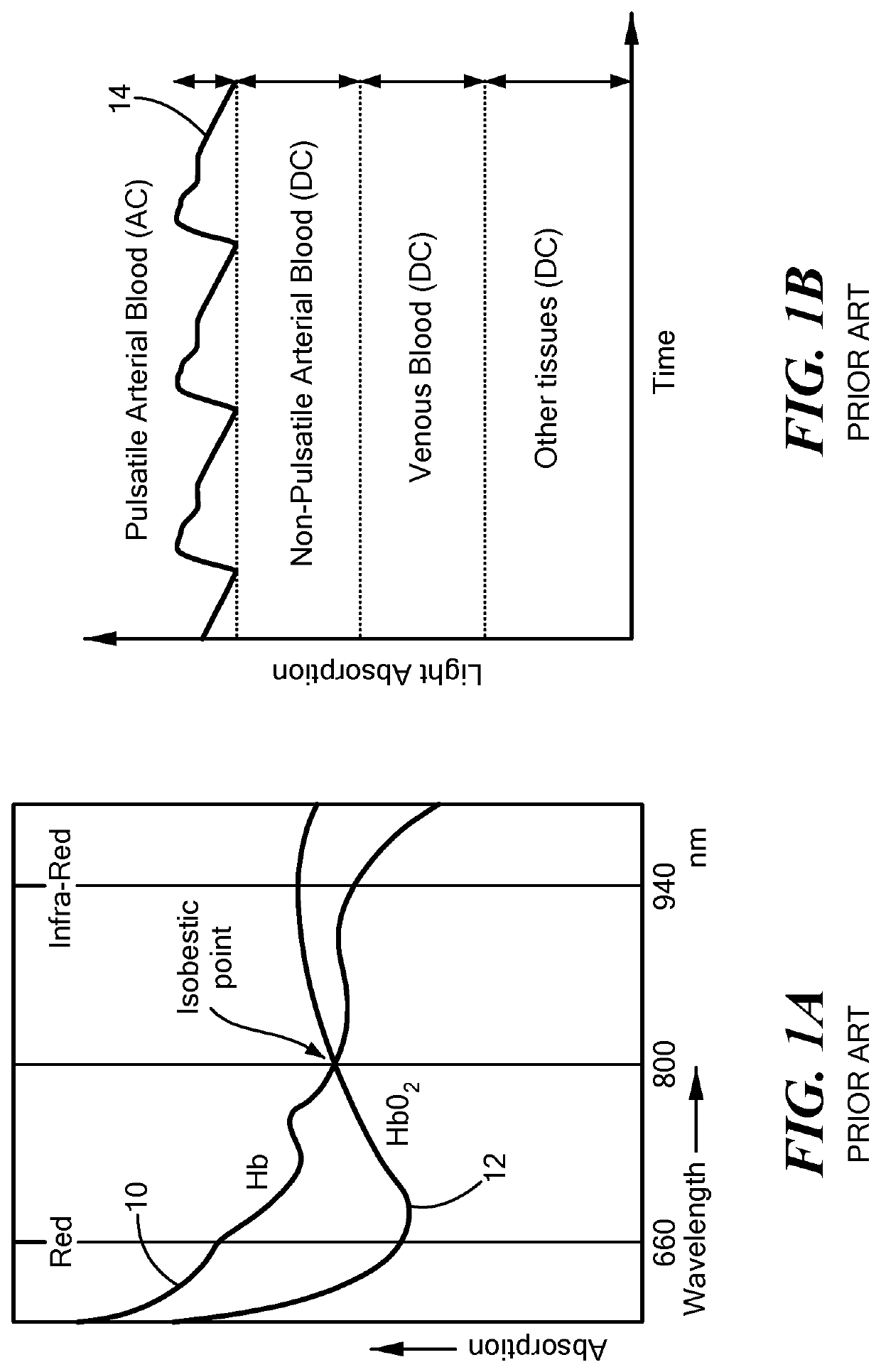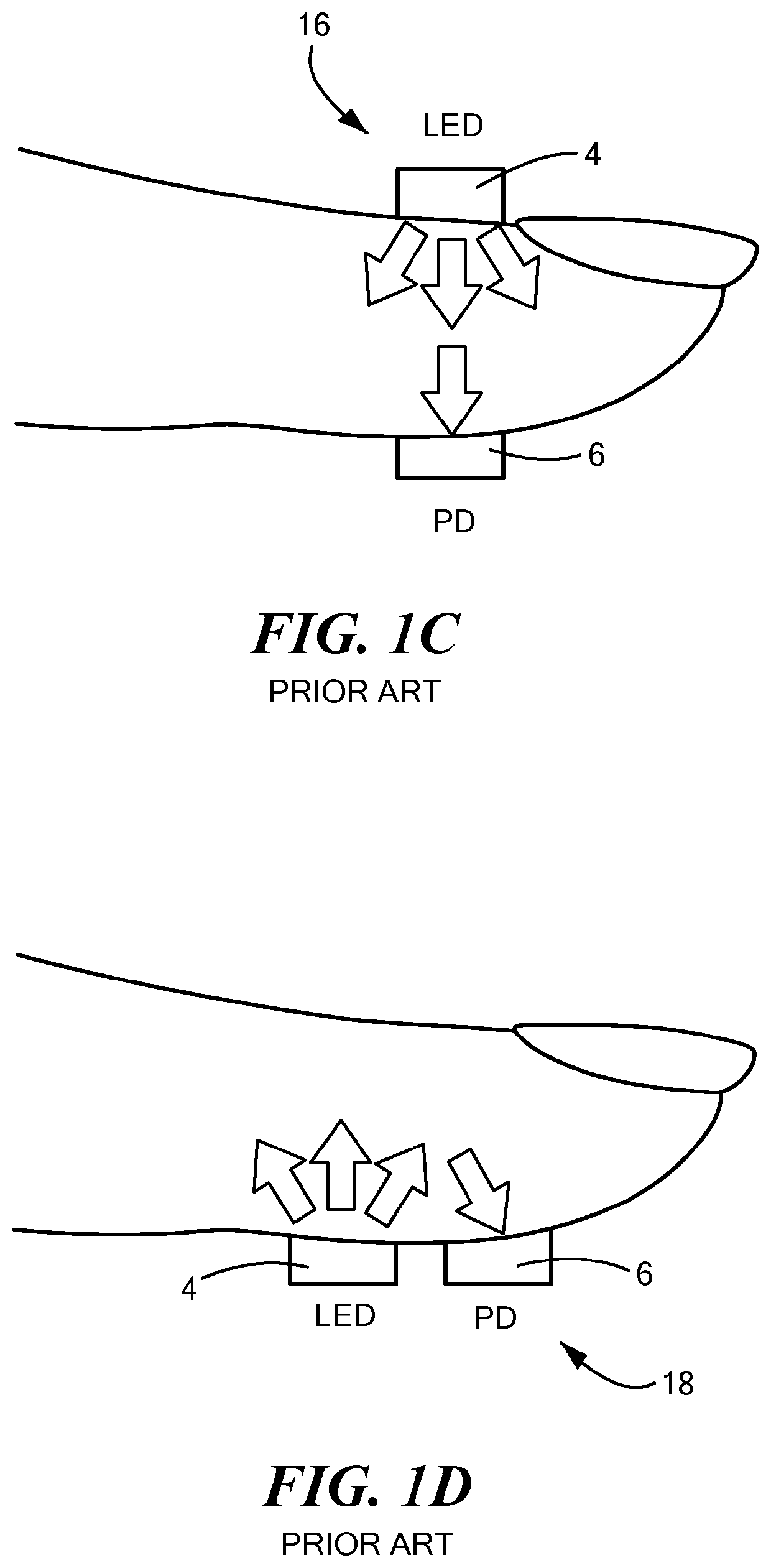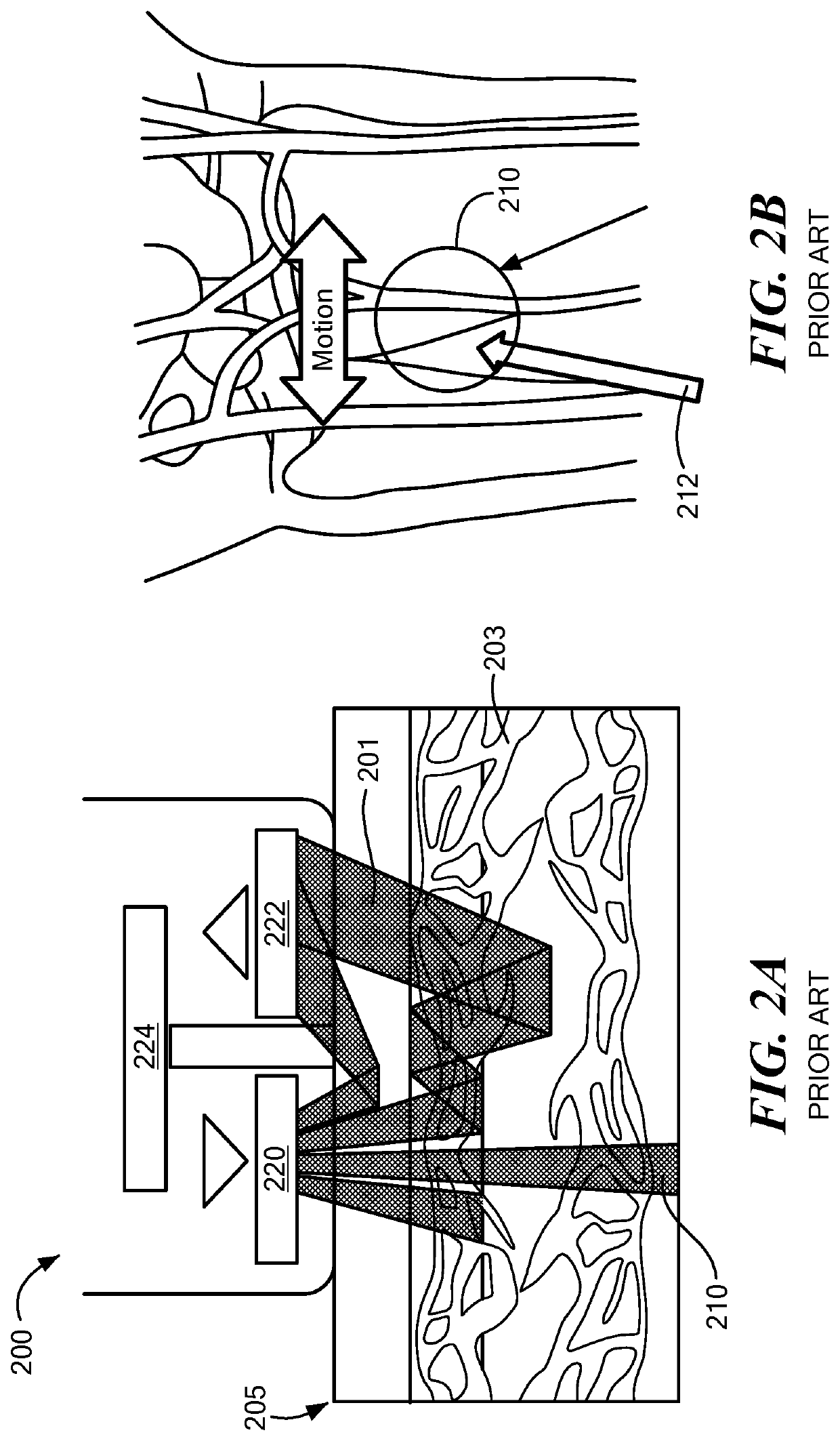Methods and System for Multi-channel Bio-optical Sensing
a bio-optical sensing and multi-channel technology, applied in the field of optical monitoring of characteristic of an organism, can solve the problems of low signal-to-noise ratio (snr), motion artifacts, and wearable ppg sensors that are far from exhibiting performance characteristics that would allow them to become reliable for mobile applications, so as to reduce background noise, reduce non-pulsatile background noise, and increase optical power
- Summary
- Abstract
- Description
- Claims
- Application Information
AI Technical Summary
Benefits of technology
Problems solved by technology
Method used
Image
Examples
Embodiment Construction
[0023]In accordance with embodiments of the invention, a novel ultra-compact bio-optical sensing platform is described. Embodied as a wearable PPG pulse oximeter, it is designed to measure blood oxygen saturation (SpO2), heart rate (HR), and respiration in intense motions with high reliability through differential optical probing of a variety of vascular elements, such as blood vessels positioned at different depth under the skin, e.g., arteries (>2 mm in depth) and capillaries (˜200 μm in depth). The optical sensing platform may also serve as a planar integrated speckle imaging system for measuring blood flow properties. The optical sensing system consists of a light source (micro-LEDs, lasers, for example) and PD arrays linked by micro-optic-coupled optical probing and detection channel arrays. A novel method is also described that is based on the multi-channel bio-optical sensing approach for biological tissue detection, identification, sensing, and tracking.
[0024]According to on...
PUM
 Login to View More
Login to View More Abstract
Description
Claims
Application Information
 Login to View More
Login to View More - R&D
- Intellectual Property
- Life Sciences
- Materials
- Tech Scout
- Unparalleled Data Quality
- Higher Quality Content
- 60% Fewer Hallucinations
Browse by: Latest US Patents, China's latest patents, Technical Efficacy Thesaurus, Application Domain, Technology Topic, Popular Technical Reports.
© 2025 PatSnap. All rights reserved.Legal|Privacy policy|Modern Slavery Act Transparency Statement|Sitemap|About US| Contact US: help@patsnap.com



